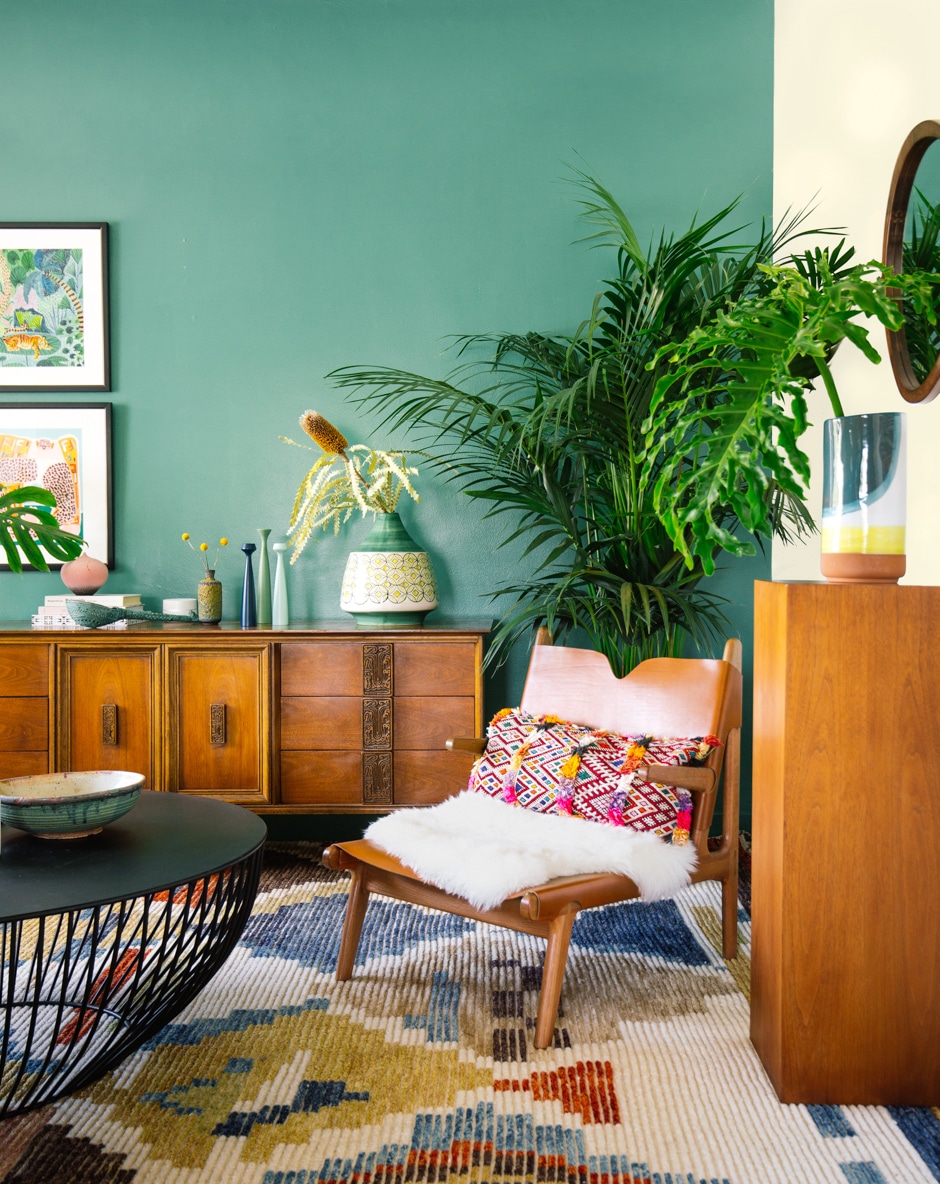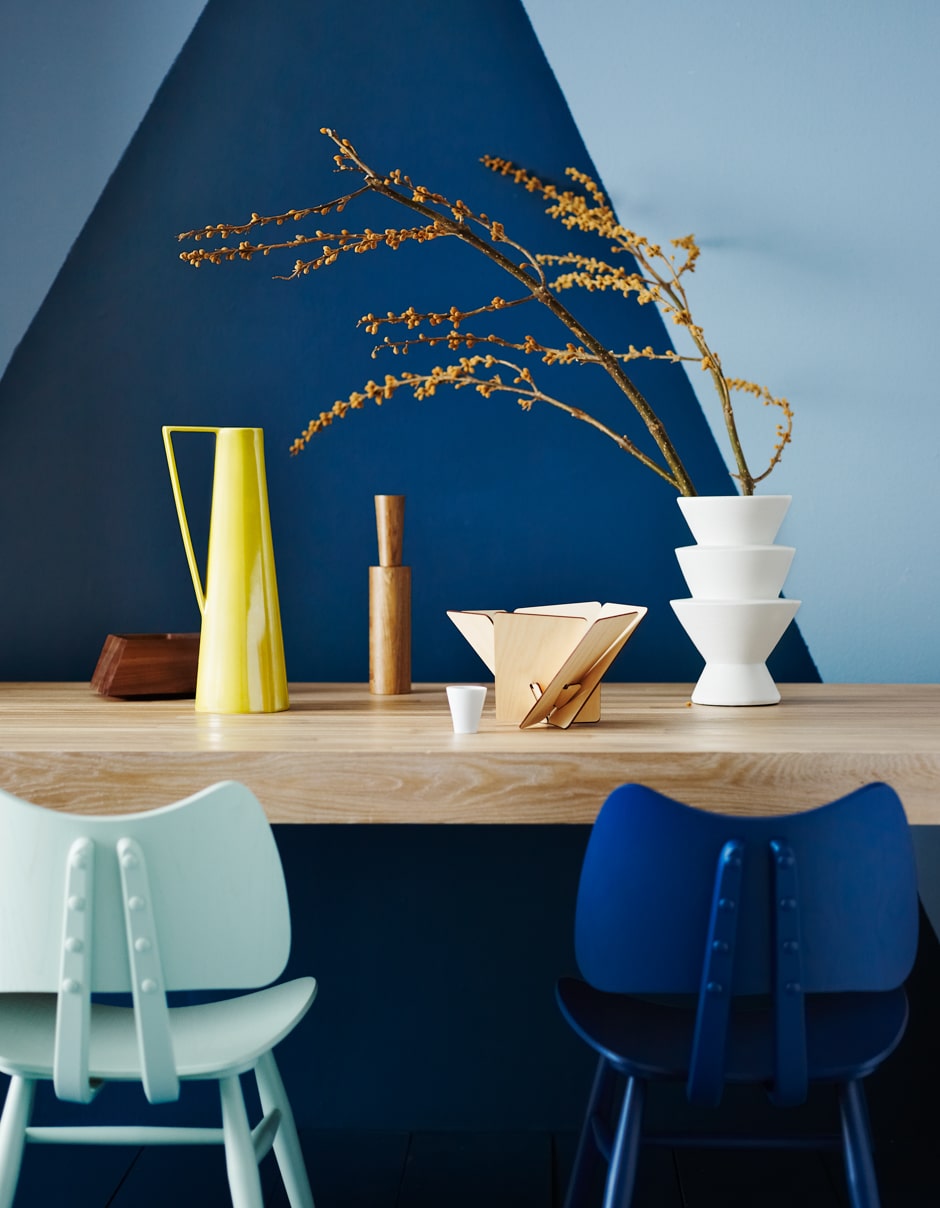How to Paint Your Walls Like a Pro
A fresh coat of paint can completely transform a room—and it’s easier to DIY than you may think.

1. Choose Your Shade
Picking a shade can feel overwhelming, but Kendra Amin-Dufton and Brad Dufton, interior designers and color consultants at Color Theory Boston, have been advising clients for years and can help you, too.
First, think about what you’re drawn to. Do you tend toward cool tones (blue, green, purple), or are warm tones (red, orange, yellow) more your thing? You can pinpoint the undertones of a color by looking at the darkest color at the bottom of a paint strip; this is the “true” color.
In addition to your likes (and dislikes), think about what you’d like the color to do for the room. “Warm colors can be stimulating, so try them in spaces where you might want to encourage movement, like a hallway,” says Amin-Dufton. Cool tones, which can feel clean and crisp, are often used in tight spaces like the bathroom and laundry room. Choosing a wall color that’s in the same family will tie the room together. Going for a contrasting color will give you a bolder look.
When you think you’ve found your winner, give it a test run. Buy a sample, paint a good-size swatch at eye level, and live with it for a few days. (Many paint brands now offer stick-and-peel swatches, so you can try out a color without ever touching a brush.) Check out how it looks throughout the day, since lighting will have a huge effect.
2. Find a Finish
Once you have your color, it’s time to figure out what finish you want. This comes down to two things: looks and practicality.
Matte (a.k.a. flat) paint reflects no light. A matte finish can hide blemishes like scratches or dents, but it can also be difficult to clean, making it best for ceilings or low-traffic areas.
Satin and eggshell paint have a bit more sheen and are easier to clean than matte, making them a go-to for most interior rooms; we recommend it for areas that have grubby little fingers passing through.
A high gloss sheen can be a lot for an entire wall, so it’s often used as an accent on trim or railings. The slick surface is also easiest to clean, which is why you’ll often see it on kitchen cabinets or painted wood floors.
Now that you have your color and finish picked out, it’s time to buy your paint! Before you commit, do your research. There are lots of eco-friendly, low-VOC (volatile organic compound) options widely available now, both from the classic paint brands (think Sherwin-Williams) and newer brands like Backdrop.
3. Get Your Gear
Shopping list! For priming the walls, you’ll need a paint scraper to get rid of any peeling paint or small bumps and a spackling kit and a putty knife for filling holes. To keep the paint where you want it (only on the walls), pick up a drop cloth to cover the floor and some blue painter’s tape to protect the ceiling and trim.
Grab an edging brush to help you get the spots that a roller can’t reach. Don’t skimp here. A high-quality brush will make it easy to get clean, straight lines, which will give your paint job a professional look. To make quick work of the rest of the room, pick up a pack of nine-inch paint rollers, a roller frame, a telescoping painter’s rod (for tall walls and ceilings), and a paint tray.
Tip: Dunking your brush wastes paint. The paint should go only one-third to halfway up the bristles.

4. Prep Your Walls
“Walls should be clean, dry, dull, and sound,” says Rick Watson, director of product information and technical services at Sherwin-Williams. The more you prep them up front, the better your paint job will look.
First, Watson recommends dusting the walls with a clean, damp rag. Next, scrape peeling paint, fill any cracks or nail holes, sand them down, and spot-treat the areas with primer. Stick your painter’s tape in foot-long strips along the trim and other woodwork, overlapping the strips so the paint won’t seep through.
Now apply a coat or two of primer. It doesn’t have to be perfect, but it should be thorough. Let it dry before starting with your paint color.
5. Ready to Roll
Now that the prep is done, you’re ready for the fun part! Open the paint can and give it a good stir. Next, grab your edging brush. The paint should go only one-third to halfway up the brush. Use it to paint a three-to five-inch border around the ceiling and trim, and hit the corners with it, too.
Then pour your paint into the tray and load up your roller. Start spreading the paint onto the wall in large V shapes, occasionally taking a step back to check for any blank or thin spots. Let the first coat dry before applying a second. If you’re leaving the first coat to dry overnight, wash out your brushes and rollers, so they’re clean and ready for the next round. After the second coat dries, check to make sure the paint is even, then clean up the room and admire your work. Nicely done!
By Christina Poletto | Green room photography by @Dabito/Old Brand New; Blue room photography by Lisa Cohen, styling by Vanessa Colyer Tay





